Related Research Articles

The Russo-Turkish War of 1828–1829 was sparked by the Greek War of Independence of 1821–1829. War broke out after the Ottoman Sultan Mahmud II closed the Dardanelles to Russian ships and revoked the 1826 Akkerman Convention in retaliation for Russian participation in the Battle of Navarino.
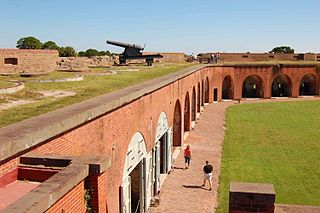
Fort Pulaski National Monument is located on Cockspur Island between Savannah and Tybee Island, Georgia. It preserves Fort Pulaski, the place where the Union Army successfully tested rifled cannon in combat during the American Civil War in 1862, the success of which rendered brick fortifications obsolete. The fort was also used as a prisoner-of-war camp.

The Great Turkish War, also called the Wars of the Holy League, was a series of conflicts between the Ottoman Empire and the Holy League consisting of the Holy Roman Empire, Poland-Lithuania, Venice, Russia, and the Kingdom of Hungary. Intensive fighting began in 1683 and ended with the signing of the Treaty of Karlowitz in 1699. The war was a defeat for the Ottoman Empire, which for the first time lost substantial territory, in Hungary and the Polish–Lithuanian Commonwealth, as well as in part of the western Balkans. The war was significant also for being the first instance of Russia joining an alliance with Western Europe.

The Great Siege of Malta occurred in 1565 when the Ottoman Empire attempted to conquer the island of Malta, then held by the Knights Hospitaller. The siege lasted nearly four months, from 18 May to 12 September 1565.

The Austro-Turkish War (1716–1718) was fought between Habsburg monarchy and the Ottoman Empire. The 1699 Treaty of Karlowitz was not an acceptable permanent agreement for the Ottoman Empire. Twelve years after Karlowitz, it began the long-term prospect of taking revenge for its defeat at the Battle of Vienna in 1683. First, the army of Turkish Grand Vizier Baltacı Mehmet defeated Peter the Great's Russian Army in the Russo-Turkish War (1710–1711). Then, during the Ottoman–Venetian War (1714–1718), Ottoman Grand Vizier Damat Ali reconquered the Morea from the Venetians. As the guarantor of the Treaty of Karlowitz, the Austrians threatened the Ottoman Empire, which caused it to declare war in April 1716.
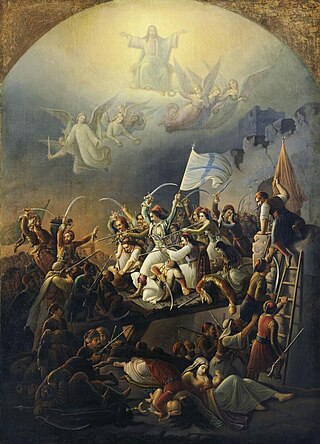
The Third Siege of Missolonghi was fought in the Greek War of Independence, between the Ottoman Empire and the Greek rebels, from 15 April 1825 to 10 April 1826. The Ottomans had already tried and failed to capture the city in 1822 and 1823, but returned in 1825 with a stronger force of infantry and a stronger navy supporting the infantry. The Greeks held out for almost a year before they ran out of food and attempted a mass breakout, which however resulted in a disaster, with the larger part of the Greeks slain. This defeat was a key factor leading to intervention by the Great Powers who, hearing about the atrocities, felt sympathetic to the Greek cause. Their support would prove decisive in helping the Greeks win the war and gain independence.

The Battle of Petrovaradin also known as the Battle of Peterwardein, took place on 5 August 1716 during the Austro-Turkish War when the Ottoman army besieged the Habsburg-controlled fortress of Petrovaradin on the Military Frontier of the Habsburg monarchy. The Ottomans attempted to capture Petrovaradin, the so-called Gibraltar on the Danube, but experienced a great defeat by an army half the size of their own, similar to the defeat they had experienced in 1697 at Zenta. Ottoman Grand Vizier Damad Ali Pasha was fatally wounded, while the Ottoman army lost 20,000 men and 250 guns to the Habsburg army led by Field Marshal Prince Eugene of Savoy.
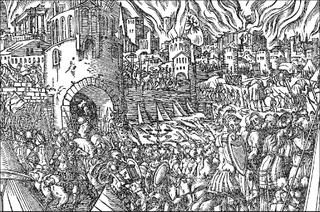
The first siege of Krujë occurred in 1450 when an Ottoman army led by Sultan Murad II and his crown prince Mehmed II tried to besiege the Albanian town of Krujë. The League of Lezhë, led by Skanderbeg, experienced low morale after losing Svetigrad and Berat between 1448 and 1450. Nevertheless, Skanderbeg's exhortations and the support of the clergy, who claimed to have had visions of angels and victory, motivated the Albanians to defend the capital of the League, Krujë, at all costs. After leaving a protective garrison of 4,000 men under his trusted lieutenant Vrana Konti, Skanderbeg harassed the Ottoman camps around Krujë and attacked the supply caravans of Sultan Murad II's army. By September, the Ottoman camp was in disarray as morale sank and disease ran rampant. The Ottoman army acknowledged that the castle of Krujë would not fall by strength of arms, lifted the siege, and made its way to Edirne. Soon thereafter, in the winter of 1450–51, Murad died in Edirne and was succeeded by his son, Mehmed II.

The siege of Izmail or Ismail / Ishmael / İzmail, also called the storming of Izmail, was a military action fought in 1790 on the Black Sea during the Russo-Turkish War (1787–1792) and simultaneously the Austro-Turkish War (1788–91). The Russians were led by Alexander Suvorov, who had defeated the Ottomans at Kinburn, Focsani, and Rymnik, as well as participating in the siege of Ochakov. The Black Sea rowing flotilla was commanded by the Spanish admiral José de Ribas.

The night attack at Târgoviște was a battle fought between forces of prince Vlad III of Wallachia, and sultan Mehmed II of the Ottoman Empire on Thursday, 17 June 1462. The battle started after Mehmed II, who already had tense relations with Vlad, discovered his alliance with Hungary's king Matthias Corvinus and ordered his forces to ambush him. Vlad foiled the attack and invaded Bulgaria. In response, Mehmed raised a great army with the objective to conquer Wallachia. The two leaders fought a series of skirmishes, the most notable one being the conflict where Vlad attacked the Turkish camp in the night in an attempt to kill Mehmed. The assassination attempt failed and Mehmed marched to the Wallachian capital of Târgoviște, where he found a few men with cannons. After leaving the capital, Mehmed discovered 23,844 impaled Turks whom Vlad had killed during his invasion of Bulgaria. The number is mentioned by Vlad himself in a letter to Matthias Corvinus. The sultan and his troops then sailed to Brăila and burned it to the ground before retreating to Adrianople. Mehmed's forces returned home with many captured slaves, horses, and cattle.
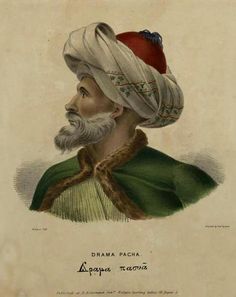
Mahmud Dramali Pasha, was an Ottoman Albanian statesman and military leader, and a pasha, and served as governor (wali) of Larissa, Drama, and the Morea. In 1822, he was tasked with suppressing the Greek War of Independence, but was defeated at the Battle of Dervenakia and died shortly after.
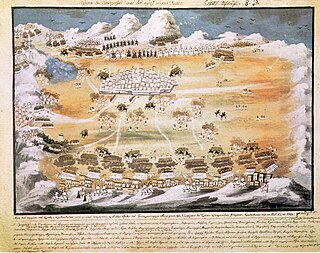
The siege of Tripolitsa or fall of Tripolitsa, also known as the Tripolitsa massacre, was an early victory of the revolutionary Greek forces in the summer of 1821 during the Greek War of Independence, which had begun earlier that year, against the Ottoman Empire. Tripolitsa was an important target, because it was the administrative center of the Ottomans in the Peloponnese.

The Morean war, also known as the Sixth Ottoman–Venetian War, was fought between 1684–1699 as part of the wider conflict known as the "Great Turkish War", between the Republic of Venice and the Ottoman Empire. Military operations ranged from Dalmatia to the Aegean Sea, but the war's major campaign was the Venetian conquest of the Morea (Peloponnese) peninsula in southern Greece. On the Venetian side, the war was fought to avenge the loss of Crete in the Cretan War (1645–1669). It happened while the Ottomans were entangled in their northern struggle against the Habsburgs – beginning with the failed Ottoman attempt to conquer Vienna and ending with the Habsburgs gaining Buda and the whole of Hungary, leaving the Ottoman Empire unable to concentrate its forces against the Venetians. As such, the Morean War was the only Ottoman–Venetian conflict from which Venice emerged victorious, gaining significant territory. Venice's expansionist revival would be short-lived, as its gains would be reversed by the Ottomans in 1718.

The Seventh Ottoman–Venetian War was fought between the Republic of Venice and the Ottoman Empire between 1714 and 1718. It was the last conflict between the two powers, and ended with an Ottoman victory and the loss of Venice's major possession in the Greek peninsula, the Peloponnese (Morea). Venice was saved from a greater defeat by the intervention of Austria in 1716. The Austrian victories led to the signing of the Treaty of Passarowitz in 1718, which ended the war.
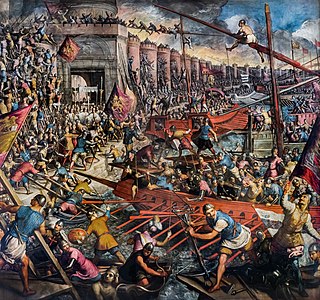
The Siege of Corinth is a rhymed, tragic narrative poem by Lord Byron. Published in 1816 by John Murray in London with the poem Parisina, it was inspired by the Ottoman massacre of the Venetian garrison holding the Acrocorinth in 1715 – an incident in the Ottoman reconquest of the Morea during the Ottoman-Venetian Wars.

The siege of Basing House near Basingstoke in Hampshire, was a Parliamentarian victory late in the First English Civil War. Whereas the title of the event may suggest a single siege, there were in fact three major engagements. John Paulet, 5th Marquess of Winchester owned the House and as a committed Royalist garrisoned it in support of King Charles I, as it commanded the road from London to the west through Salisbury.

The siege of Fort Augustus took place from 22 February to 1 March 1746, during the Jacobite rising of 1745. After a short siege, the government garrison surrendered to a Jacobite force, which then moved on to besiege Fort William, using artillery captured at Fort Augustus.

The siege of Famagusta happened in Venetian-controlled Famagusta, the last Christian possession in Cyprus. Famagusta fell to the Ottomans in August 1571 after a siege that lasted nearly a year.
Bahadir or Bahadır I Giray was a khan of the Crimean Khanate. Much of his reign was spent dealing with Azov which had been captured by the Don Cossacks. Unlike many khans, he died of natural causes. He was the father of Selim I Giray and, through him, the ancestor of all khans who reigned after 1700 except for Devlet III.
The Ottoman reconquest of the Morea took place in June–September 1715, during the Seventh Ottoman–Venetian War. The Ottoman army, under Grand Vizier Silahdar Damat Ali Pasha, aided by the fleet under Kapudan Pasha Canım Hoca Mehmed Pasha, conquered the Morea peninsula in southern Greece, which had been captured by the Republic of Venice in the 1680s, during the Sixth Ottoman–Venetian War. The Ottoman reconquest inaugurated the second period of Ottoman rule in the Morea, which ended with the outbreak of the Greek War of Independence in 1821.